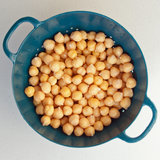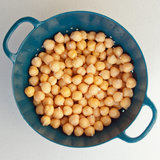
There are plenty of reasons to eat lower on the food chain, but you don’t need to sacrifice your protein intake. Nutritionist Julie Upton, MS, RD, of Appetite For Health is here to help with recommendations of high-protein foods minus the meat.
More than half of all Americans are trying to pump up the protein in their diets, according to the NPD Group, but recent headlines based on a World Health Organization report that classified processed meats as “carcinogens,” like tobacco and asbestos, have many protein-seekers looking for more meat-free protein alternatives.
The World Health Organization’s report, published in The Lancet Oncology, included more than 800 previously published studies about diet and cancer and concluded that processed and red meats, like beef, bacon, and deli meats, increase risk for colorectal cancer and possibly prostate and pancreatic cancers. They wrote that for every two-ounce portion of processed meat eaten daily, you could increase your risk for colorectal cancer by 18 percent.
While you don’t need to give up processed meats or red meat entirely, there are no downsides to cutting down on the amount you eat. What’s more, the American Cancer Society recommends eating more plant-based foods and minimizing animal-based products to reduce the risk for cancer.
How Much Protein Do You Need?
The recommended dietary allowance (RDA) for protein is .36 grams per pound of pound weight (47 grams for a 130-pound woman), but The American College of Sports Medicine recommends much more. They recommend that endurance athletes obtain .6 grams protein per pound and strength athletes about .75 grams per pound.
As an active “flexitarian,” some of the ways I ensure that I get the protein I need to build and maintain muscle mass is with Greek yogurt, beans, nuts, and soy. I also use some of the protein-enhanced options in the supermarket like legume-based Tolerant pasta, which has more protein per ounce than beef, and pea-protein-infused breakfast cereals that have more protein per serving than an egg. I try to make sure my snacks include nuts, like pistachios, which a new study in the British Journal of Nutrition shows has more protein, six grams per ounce, than most other nuts, and they are considered a “complete” protein with all nine essential amino acids.
Here are some of the best plant-based proteins to enjoy in place of red and processed meats and how I get ample quality protein in my diet without eating meat.
| Meat-Free Choice | Grams of Protein/ Serving* |
|---|---|
| Split Peas | 24 grams per 1/2 cup |
| Greek Yogurt (plain) | 20-22 grams per cup |
| Tolerant Lentil or Black Bean Pasta | 21-22 grams per 3 ounces |
| Cottage Cheese | 13 grams per 1/2 cup |
| Lentils | 9 grams per 1/2 cup |
| Chickpeas | 20 grams per 1/2 cup |
| Protein-Enhanced Cereal (i.e., Great Grains Protein Blend, Kashi Go Lean, Cascadian Farm Protein Granola) | 8-10 grams per cup |
| Beans (Navy, Pinto, Black, etc.) | 7-10 grams per 1/2 cup |
| Whole Grains (Quinoa, Kamut, Barley, Oats, Buckwheat, Wild Rice) | 7-10 grams per cup |
| Seeds (Hemp, Chia, Pumpkin, etc.) | 5-9 grams per ounce (about 1/4 cup) |
| Firm Tofu | 9 grams per 3 ounces |
| Nut Butters (Peanut, Almond, etc.) | 6-8 grams per 2 tablespoons |
| Soy Milk | 8 grams per cup |
| Pistachios | 6 grams per ounce (49 kernels) |
| Eggs | 6 grams per large egg |
*Check Nutrition Facts labels of products for grams of protein per serving.
A Sample Menu
Here’s a one-day eating plan with about 2,000 calories and 85 grams of meat-free protein:
Breakfast
Overnight yogurt, berry, and oat parfait: 3/4 cup plain Greek yogurt with 1 cup fresh berries and 1/2 cup quick-cooking oats. Layer yogurt, berries, and oats in a jar or bowl and refrigerate overnight. Enjoy in the a.m.
Protein = 22 grams
Snack
1 slice whole-grain toast with 1 tablespoon nut butter and 1/2 banana
Protein = 6 grams
Lunch
1 cup lentil soup with 3-4 whole-grain crackers
Tossed salad with 1/4 cup chickpeas
Protein = 20 grams
Afternoon Snack
Wonderful Pistachios 100-calorie pack (about 30 nuts)
1 soy latte
Protein = 12 grams
Dinner
1 cup Tolerant Lentil Pasta topped with marinara sauce
2 crostinis topped with fresh tomatoes, basil, and mozzarella cheese
Tossed salad with 1/4 cup sunflower seeds
Protein = 25 grams
Source: Pop Sugar







